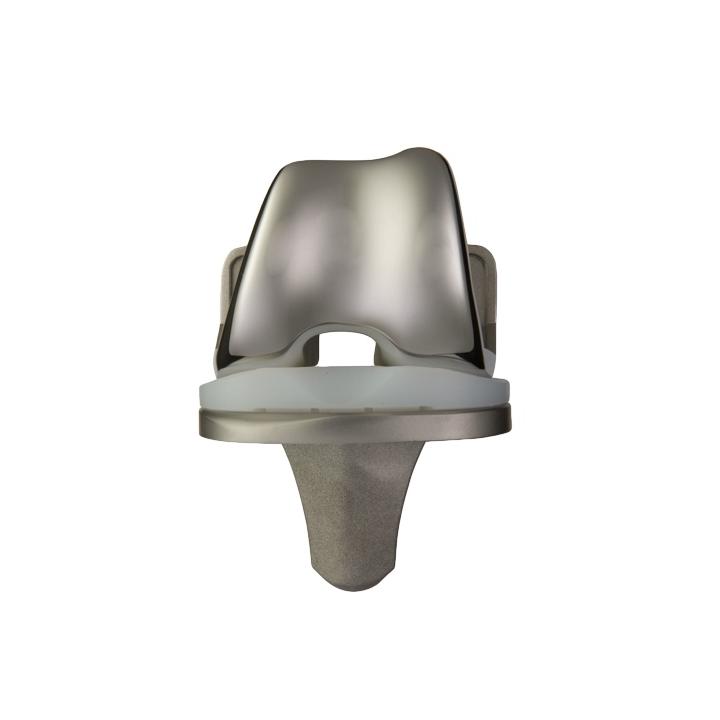Foundation® Knee System


Foundation® Knee System
The Value of Fit, the Freedom of Choice
The Foundation Knee System®, with over 17 years of successful clinical results, is the only knee system to combine eleven AP femoral sizes with anatomic baseplates for a more custom fit, which allows you to choose the right fit for a lasting TKA. The Foundation Knee offers the modularity of CR, PS, Ultra-congruent, and Revision options to adapt to both simple and complex knee replacement procedures. The Foundation System was designed to replicate normal knee kinematics. The precise simplicity of the Foundation Knee Instrumentation was designed to provide accurate cuts for reproducible results.
- Features & Benefits
- Documents
-
Patello-Femoral Kinematics
- The deepened patellar groove on the Foundation femoral component minimizes patellar advancement which has been shown to increase flexion 3 and restore normal kinematics.
- Anatomic patellar groove promotes normal biomechanics.
- Groove depth increases at higher angles of flexion to provide increased resistance to patellar dislocation.
- The patello-femoral geometry of the Foundation Knee can resist lateral joint forces well beyond those seen in the physiological knee 5.
-
Tibial Fixation: Solutions for Tibial Loosening
Minimize the Transfer of Shear Stresses to the Underside of the Tibial Baseplate
The Foundation tibial-femoral geometry was designed to allow the desired motion for a prosthetic knee which includes 8mm of rollback and +/-15° of rotation 7.
Maximize Resistance to Shear Forces
The tibial stem design utilizes the strongest bone in the proximal tibia to resist rotational forces design to provide maximum initial fixation and long term stability 1,4,6.
Optimize Load Distribution
The asymmetric profile of the Foundation tibial components offers total coverage and uniform loading. These results are not thought to be achieved by symmetrical designs 2.
References
1. Dempsey, A.J., Finlay, j.B., Bourne, R.B., Rorabeck, C.H., Scott, M.A., and Millman, J.C., Stability and Anchorage Consideration for Cementless Tibial Components, J. Arthoplasty 4:223-229, 1989.
2. Dupont, J.A.,Weinstein, A.M.,Townsend, P.R., Tibial Plateau Coverage inTotal Knee Replacement.Tenth coverage and Annua Meeting Soc. Biomaterials. Washington,D.C., April27-May1, 1984.
3. Moreland, J.R., Mechanism of Failure in Total Knee Arthoplasty, Clin. Orthop. 226:49, 1988.
4. Reily, D., Walker, P.S., Ben-Bov, M., Ewald, F.D., Efects of Tibial Components on Load Transfer in the Upper Tibia. Clin. Orthop. 165:274, 1982.
5. Steuben, C.M., Postak, P.D., Patelo-Femoral Resistance to Lateral Subluxation, Contact Areas and Surface Stress Distributions of the Foundation Total Knee System. Submitted to Encore Orthopedics, Inc., in February, 1993, by The Orthopaedic Research Laboratories, The Mt.Sinai Medical Center, Cleveland, Ohio.
6. Walker, P.S., Requirements for Sucesful Total Knee Replacements. Orthopedic Clinics of North America, Vol. 20, No.1, January,1989.
7. Yoshi, I., Whiteside, L.A., Anouchi,Y.S., The Effect of Patellar Button Placement and Femoral Component Design on Patellar Tracking in Total Knee Anthroplasty. Clin. Orthop. and Rel. Res, 275:211-19.